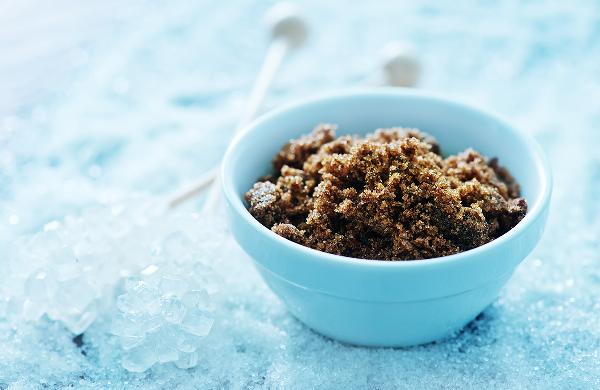Health experts are sounding the alarm on certain frozen foods that, despite their convenience, pose significant health risks. While frozen meals have evolved from the days of TV dinners laden with questionable ingredients, many still fall short in terms of nutrition. A growing body of research, including a 2024 review published in the British Medical Journal, links ultra-processed foods to serious health issues such as cancer and cardiovascular disease. With this in mind, nutritionists and dietitians are urging consumers to avoid certain frozen meals that are high in sodium, sugar, unhealthy fats, and additives.

Key Nutritional Red Flags in Frozen Meals
When selecting frozen foods, it’s crucial to scrutinize the nutrition label. Here are the primary factors to consider:
Calories: The average daily calorie intake ranges between 1,600 to 2,000, depending on age and fitness goals, according to the Cleveland Clinic.
Saturated Fat: Excessive saturated fat, often found in frozen meals, can lead to high cholesterol and heart disease. The American Heart Association recommends limiting saturated fat to 13 grams per day for a 2,000-calorie diet.
Sodium: Many frozen meals are loaded with salt, which can harm heart health. The American Heart Association advises consuming no more than 2,300 milligrams of sodium daily, though many Americans exceed this limit.
Sugar: Added sugars in frozen meals can contribute to weight gain and other health problems. Women should limit sugar intake to 6 teaspoons (100 calories) per day, while men should not exceed 9 teaspoons (150 calories).
The Worst Frozen Foods to Avoid
Here are seven frozen meals that nutritionists recommend steering clear of, ranked from bad to downright unhealthy:
Marie Callender's Chicken Pot Pie
This comfort food classic is a nutritional minefield. A single pot pie contains 440 calories, 26 grams of fat (11 grams saturated), and 650 milligrams of sodium. Amanda Sauceda, MS, RD, warns that the pot pie’s serving size is deceptive, as one pie is actually two servings. Danielle VenHuizen, MS, RDN, adds that the meal lacks fiber and is high in refined carbohydrates, making it a poor choice for blood sugar and digestion.
Banquet Beef Pot Pie
With over 30 ingredients, including hydrogenated lard and MSG, this pot pie is a processed shortcut rather than a nutritious meal. Christine Lauer, a nutritionist at Mochi Health, notes that while it includes beef and vegetables, the preservatives and sodium boosters make it a less-than-ideal choice.
Jimmy Dean Pancakes & Sausage on a Stick
This breakfast option may be convenient, but it’s far from healthy. Bess Berger, RDN, points out that consuming three sticks amounts to 750 calories, 66 grams of carbs, 45 grams of fat, and 1,230 milligrams of sodium. The added ingredients, such as caramel color and soy protein concentrate, further diminish its nutritional value.
Frozen Fried Chicken
Jacek Szymanowski, PN Certified Nutritionist, warns that frozen fried chicken may be contaminated with harmful bacteria and often contains propylene glycol, a chemical that can cause adverse health effects. Additionally, it’s high in calories, fat, and sodium.
DiGiorno Cheese Stuffed Crust Three Meat Pizza
This pizza is a calorie and sodium bomb. Berger explains that just one-sixth of the pie contains 380 calories, 18 grams of fat, and 840 milligrams of sodium. Eating half the pizza can exceed the daily recommended sodium intake, contributing to obesity and heart disease.
Frozen Meat Lover's Pizza
Szymanowski highlights that this pizza, while high in protein, is loaded with saturated fat and sodium. The processed meats, such as sausage and pepperoni, are linked to increased cancer risk and inflammation, making it one of the unhealthiest frozen options.
DEVOUR Sharp Cheddar Mac & Cheese with Bacon
Topping the list of frozen meals to avoid, this mac and cheese is a calorie bomb with little nutritional value. Szymanowski notes that the combination of heavy cheese sauce, refined pasta, and processed bacon makes it high in unhealthy fats, calories, and sodium.
Making Healthier Frozen Food Choices
While these frozen meals are best avoided, not all frozen foods are created equal. Nutritionists recommend opting for meals with shorter ingredient lists, whole food-based ingredients, and balanced macronutrients. For those seeking convenience, frozen vegetables, lean proteins, and whole-grain options can be healthier alternatives.
Ultimately, being mindful of portion sizes and reading nutrition labels can help consumers make better choices in the frozen food aisle. By avoiding these seven unhealthy options, you can protect your health while still enjoying the convenience of frozen meals.
























